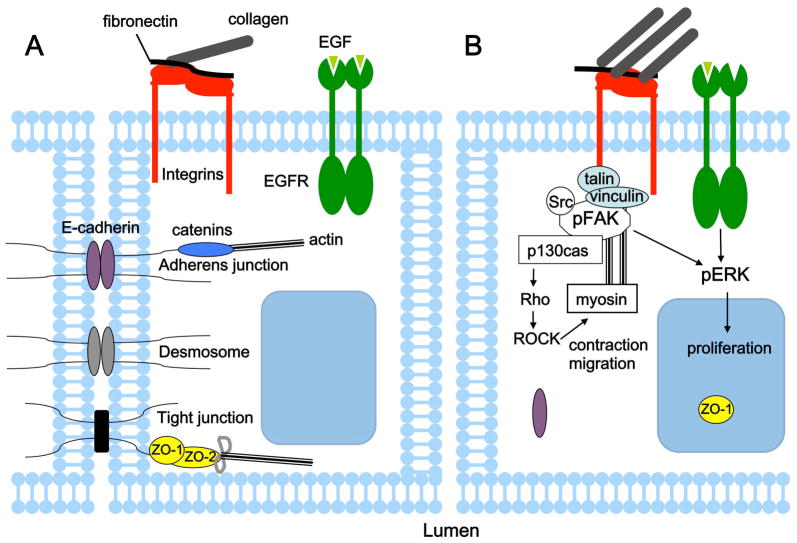Figure 3.
Integration of environmental cues including growth factors, cell–cell contacts and ECM regulates proliferation. (A) A compliant ECM and contact with neighboring cells impose constraints on epithelial cell proliferation. (B) Increased ECM stiffness reduces the threshold amount of EGF needed to override contact inhibition and stimulates proliferation. Loss of contact inhibition coincides with disruption of cell-cell contacts, change in localization of EGFR and ZO-1, and enchanced ERK signalling (Kim and Asthagiri, 2011). MECs also respond to increased matrix stiffness in a FAK-dependent manner by developing mature focal adhesions, upregulating a FAK-Rho signalling loop and ERK activation, which stimulates contraction, migration and proliferation.

